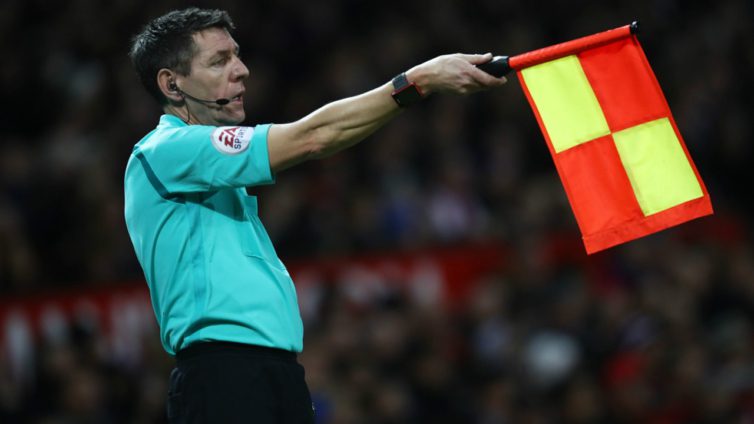The use of technology to help officials make more accurate offside decisions will be tested at the Fifa Arab Cup, which starts on Tuesday.
"Semi-automated offsides" work using between 10 and 12 cameras which collect up to 29 data points for every player 50 times per second.
If it spots a potential offside an alert is sent to the video assistant referee (VAR), who has the final call.
The technology could be used at the 2022 Fifa World Cup.
"VAR has had a very positive impact in football and the number of major mistakes is reduced, but there are areas where it can be improved - and offside is one of them," said Pierluigi Collina, Fifa's chief refereeing officer.
"We are aware the process to check offsides can take longer [than other decisions], especially when it is very tight. We are also aware that the positioning of the lines may not be 100% accurate.
"For this reason Fifa is developing a technology which could offer faster and more accurate answers. This is known as semi-automated offside.
"For offside the decision is taken after analysing the position of players, but also their involvement in play. Technology can draw a line but the assessment remains in the referee's hands. This remains crucial."
Since the introduction of VAR in Europe's major leagues, offside decisions have been among the most controversial, with some goals being ruled out by the smallest of margins.
Roberto Firmino's strike for Liverpool against Aston Villa in 2019, for example, was ruled out because his armpit was offside.
Planned trials of the new technology during 2020 were disrupted by the coronavirus pandemic, but tests have taken place in England, Spain and Germany.
The Arab Cup, which features 16 teams and is staged across six stadiums in Qatar, is the most significant trial for the technology yet.
"It is based on limb-tracking technology," said Fifa's football technology and innovation director Johannes Holzmuller.
"Software is processing this data and, in case of an offside offence, an automated alert is sent to the video operations room. That's the reason we call it 'semi-automated' - at the end it is still the VAR who has to validate and confirm the proposed offside. Then the VAR informs the referee on the pitch about the decision.
"There are two focus points. The first focus is on the kick point - the moment the ball is played - and the second is which body part is closest to the goalline, the defender or the attacker. We hope with technology that we can be faster and more accurate."
Latest Stories
-
‘No child left behind in Free SHS’ – Akufo-Addo declares
6 mins -
MMDAs tasked to pay more attention to TB cases
8 mins -
2024/25 GPL: Defending champions Samartex suffer second consecutive loss as Basake Holy Stars wins 1-0
10 mins -
Government stands firm in Galamsey fight, says Akufo-Addo
15 mins -
National Peace Council assures public of violent free elections
19 mins -
Agenda 111 to be discontinued if NDC comes to power – Akufo-Addo
29 mins -
Mahama begins 3-day tour of the Western Region today
34 mins -
NCCE holds Parliamentary Candidates’ dialogue at Kumbungu
51 mins -
Akufo-Addo commissions new oil and gas services terminal
52 mins -
Bono East NIB seizes stolen SHS rice, arrests driver
53 mins -
Petroleum Commission gives $3.6bn contracts to indigenous companies
1 hour -
COP29 ends with $300bn annual deal to fight climate change
2 hours -
Singer absolutely terrified of Diddy, lawyer says
2 hours -
Texas schools can now teach Bible-based reading lessons
2 hours -
South African anti-apartheid writer Breytenbach dies
2 hours

